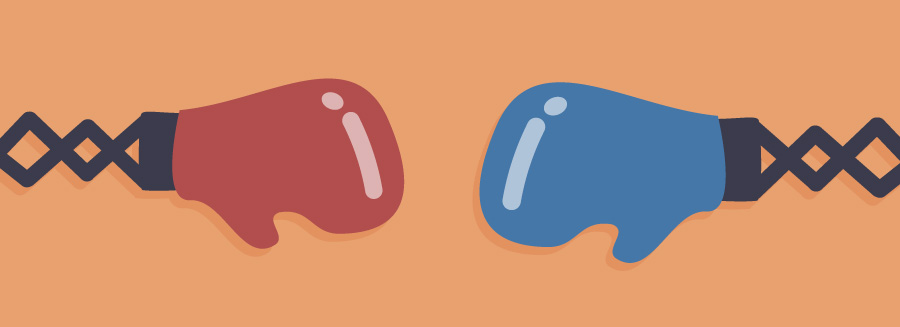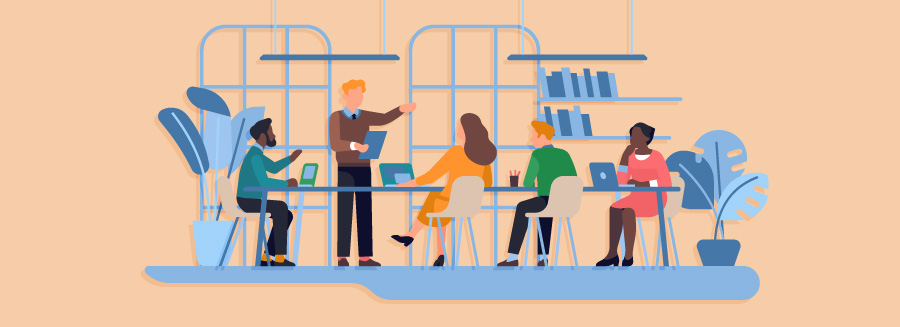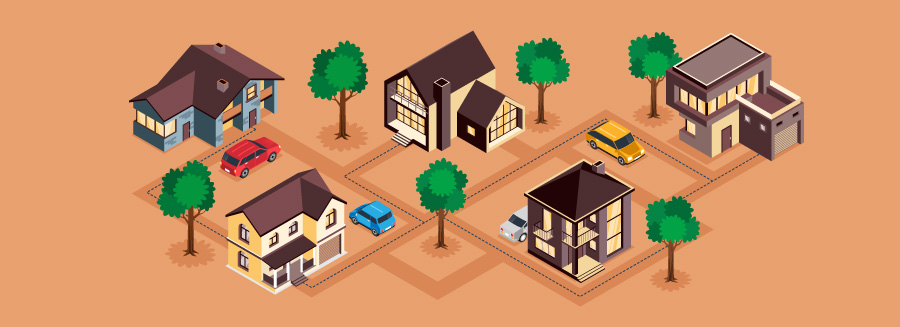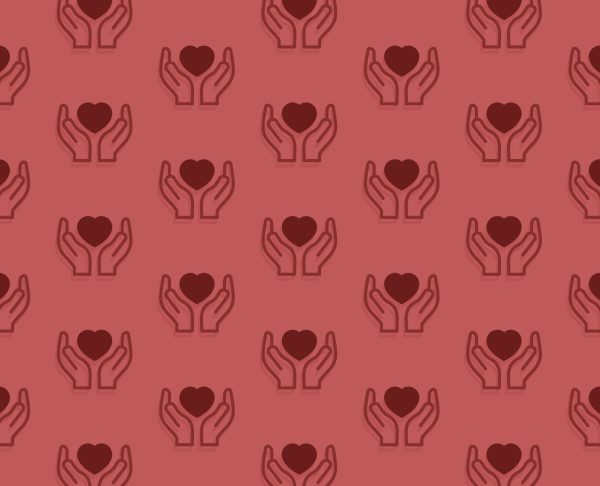Talking to our students about racial/gender/class/disability/LGBTQ bias can feel like tiptoeing through a minefield. But when we “zoom out” from the individual feelings and reframe bias through a social lens, we can more successfully navigate these conversations and guide students towards a deeper and more complex understanding.

Beyond Implicit Bias Training
Many schools/workplaces have implemented some version of implicit bias training in recent years. The goal of these sessions is to help participants uncover hidden biases in themselves, and through that awareness, reduce the impact those biases have on their actions. The hope is that this reflective process will create a ripple effect across the school/workplace and result in a less biased and more equal culture. But, these types of initiatives rarely result in measurable transformation, and in fact, they may even inflame tensions among students/employees. Some common reactions to discussions about racial/gender/class/disability/LGBTQ bias are:
- an outright rejection, i.e., “I don’t have a bias against ____. This isn’t a real problem. Stop trying to divide us. This is offensive.”
- a polite dismissal, i.e., “Some people are biased against ____. But not me. And not anyone I know. Thanks, but this doesn’t apply to me.”
- a confused acceptance, i.e., “I am trying to recognize and unlearn my own biases against ______. But what should I do next? This is frustrating.”
Notice how each of these types of responses imagines bias as a personal characteristic. The basic takeaway of most implicit bias training is highly individualized, i.e., bias commonly operates in an unconscious way, impacting your actions without your awareness. When exposed to these ideas, for some, the response is immediate defensiveness. They are offended by the idea that they hold any bias at all and especially by the idea that their actions might be influenced by bias. Others accept the idea that we all hold deep-seated biases, but want desperately to know what we can do about it. The answer they usually receive is to “do the work”–through self reflection–to root out and reduce said biases. But that can feel very frustrating and defeating in its abstractness. It can feel like being stuck in a loop. Examine and acknowledge your biases, but then what? As long as we maintain an individualized understanding of bias, we are unlikely to go beyond these defensive or frustrated responses.

Biases as Social vs. Individual
Now let’s explore how we can use the sociological perspective to reframe how we talk about bias with our students and how we can reduce its negative impact.
First, when we reframe bias as a social creation, not an individual one, we are no longer talking about bias as a personal characteristic, we are talking about how our culture’s biases impact us. We do not invent biases on our own, in our own minds. Biased thinking comes from stereotypes and stereotypes are like polluted air. We breathe them in without realizing it. They are embedded in our cultural norms and because of that, they seem normal to many of us. Just like polluted air can look and smell like clean air, stereotypes can feel like common sense. However, just because stereotypes are all around us doesn’t mean they are natural. Like polluted air, humans create stereotypes. But, over time, they gain a life of their own, and become very difficult to eliminate. They impact our thoughts, feelings, and reactions in all kinds of situations, and most insidiously, they infect our law and policies so that even seemingly neutral institutions like schools and hospitals can actually function in biased ways.

So, when we reframe bias in a social way for our students, when we allow them to get some (metaphorical) distance from bias, we can more effectively navigate the feelings that spring up. Remind students that we are not individually to blame for the stereotypes that have infected us and created biases within us. That happens without our permission. But, they will wonder, if internalized biases can affect our actions without our awareness, “What are we supposed to do about it?”
This is where we can really put our zooming out skills into practice.
Social Problems, Social Solutions
If we take the lessons of implicit bias training to heart–that bias can operate in an unconscious way, and cause damage, even when people have no malicious intent–then we may be at a loss for how to help students see solutions. This is why we often default to individualized solutions. But, individual changes will never be enough to solve social problems. Social problems need social solutions. To reduce the impact of bias, we need changes on the structural level (laws, policies, practices), not simply on the individual level. What does this mean?
Let’s explore two examples.
(As you’ll see, these are both complicated issues. But, your students don’t need to be experts to practice zooming out and reimaging the world. The goal is to expand their frame of reference and help them practice thinking complex thoughts about complex issues. Remember, you do not need to provide all the answers. Your role can be to help them ask good questions.)
First, let’s say you wanted to explore with your students how gender bias operates. Have them imagine a male-dominated company in a male-dominated industry, like Google. In 2021, women are still vastly outnumbered at Google. If the CEO wanted to achieve equal gender representation at his company, what should he do? He may try to address the issue through anti-bias training. The goal would be to increase awareness of bias against women in the workplace culture. While this could certainly do some good, it’s not easy to change deep-seated beliefs like that. And awareness of a bias doesn’t automatically change its impact. The basic structure of the workplace–norms, policies, or hiring practices–stays the same. To instead take a social view of this issue would mean that the CEO would need to recognize the impact of biases and make changes on the structural level that would reduce the impact that biases can have. This may mean that the company sets a goal that women will hold at least 50% of positions within three years. Or, it may mean that hiring committees evaluate applications with the names hidden, so as to not trigger unconscious bias against female applicants.

Next, let’s say you are talking with your students about why neighborhoods in the US are still so segregated by race and ethnicity. Does this segregation exist because white homeowners living in more affluent neighborhoods are biased against families of color? Even this suggestion would offend or enrage many white homeowners. Most would argue vehemently that families of color are welcome in their neighborhood. Some might even hang “All Are Welcome Here” signs in their windows to make it entirely clear to passersby. And while those inclusive sentiments are positive, do they change the racial makeup of neighborhoods? Historically, they have not. Because the problem of segregation is much more complicated than individual bias. How, then, do we address this enduring segregation? When we look beyond the individual to the social, we would take historical context into account. And we would explore how cultural biases influenced our housing laws and policies and the legacy of those practices. We can then begin to imagine social policies that would reduce the impact that biases can have. This may mean addressing past discrimination by providing grants for historically disadvantaged groups to buy homes in segregated neighborhoods. This may mean increased oversight of mortgage companies to reduce racial discrimination in lending.

And, remember, being aware of the fact that biases are deeply embedded in us does not automatically reduce their impact on us. But reimagining how organizations function so as to reduce the impact those biases have can actually impact outcomes. Of course, structural changes are much more difficult and complex than individual changes. But when we can help students see the ways that bias is embedded into laws, policies, norms, and practices, when we can help them zoom out from the individual, the solutions will come into focus. The idea of structural change becomes less abstract for them (and us) when we practice thinking sociologically. And instead of defensiveness and frustration, we can help students feel empowered as they reimagine a path towards a more equitable society.






